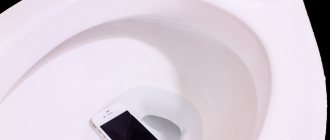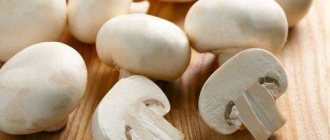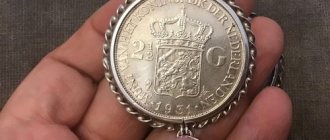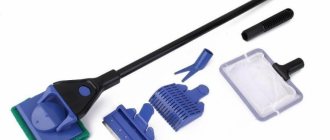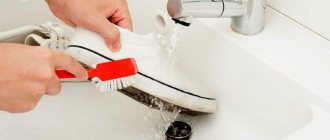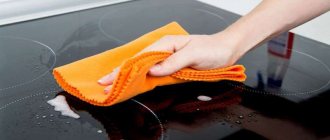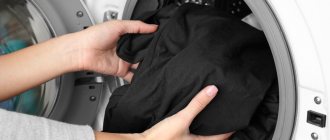You can't see it with the naked eye, but your smartphone is probably crawling with germs. Smartphones are home to all sorts of bacteria, which inevitably end up on your hands and face. Several people can pick them up a couple of times a day, they lie on different surfaces, they are carried everywhere, even to the bathroom. Also, mobile devices are usually not handled with very clean hands, and it is surprising that we are not all infected with diseases 90% of the time. Therefore, you need to clean your smartphones daily.
Why does it lose its presentation?
A cell phone doesn’t seem to be one of those things that needs to be cleaned every day. They carry it in a purse or pocket, put it on a table or nightstand, so where does the dirt come from? Meanwhile, everything is not so simple. They called you while you were eating cheburek, and you answered, but, of course, there was no time to wash and dry your hands.
Where was your phone while you were digging a garden bed? On the well lid? So much for the dust. You won’t have to look for the cause of the scratches for long either - the case is torn, you haven’t gotten around to buying a new one yet, so your precious gadget lies in your pocket along with your keys or in your purse next to a nail file.
So what can you do to ensure that you have to clean your cell phone as little as possible?
- Carry it only in a case.
- If you still don’t have a case, keep your mobile phone and objects that can scratch it in different places.
- Do not grab the screen (and the body too) with dirty hands.
- Do not allow water or other liquids to get on the screen or in the cracks, and especially not to allow the device to fall into a pool or a cup of tea.
- Try to keep away from detergents, permanent paints, acids and alkalis.
- At the dacha or on the beach, do not put your phone on the first object you come across.
- Change the battery in time.
What is safety glass?
Protective glass is a modern type of covering for displays on smartphones and gadgets. It is made using a chemical method based on tempered glass.
Important! Compared to ordinary film, it is several times thicker and harder. That is why, if this coating is present on the phone, it protects the screen from fingerprints, scratches, moisture and even shocks. Despite these characteristics, the brightness and color do not change.
Any problems with the appearance of the gadget can be prevented if you use the right care products. Read on our website how to clean your phone.
Due to the multi-layer coating, the thickness of the glass varies from 0.25 mm to 0.5 mm, the composition of which is as follows:
- The first layer is always silicone based. It sticks to the display.
- The next layer is the fastening layer. It is this that prevents fragments from spreading if a crack or mechanical shock occurs.
- The third layer of coating is an anti-reflective film. It maintains the visibility of drawings on the screen if it is exposed to direct sunlight or other bright light.
- The protective layer protects against shocks, falls and other mechanical damage.
- The very last layer is the oleophobic coating. It provides protection against moisture, fingerprints and makes the screen easy to clean.
With active use, the top coating, which ensures the reliability of the unit, becomes dirty. This is when the question arises of how to clean the protective glass of your phone. How to do this and what is required for this, we will consider further.
What can't you clean?
A mobile phone, even the most primitive one, is a delicate thing. Almost all of its parts are made of different plastics (sometimes the body is metal, and the display is made of real glass). Inside there are elements that are harmful to dust and moisture - for example, a battery. A drop of water that gets into the cracks between the case and the lid can damage your device forever. From this it follows that you cannot wash your phone as if it were a plastic children's toy.
Some other things are also not recommended. For example, to clean your phone, you should not use:
- alcohol;
- gasoline;
- acetone and other solvents.
Important! All these substances, so useful, for example, for removing paint from clothes, turn out to be completely useless when it comes to a mobile phone, tablet, e-reader, etc. And not just useless - they can cause irreparable harm to the device and will definitely disfigure it:
- Acetone is an excellent dissolver for many plastics; there is hardly any point in trying it, even if you dropped your phone in a bucket of paint.
- Gasoline and alcohol do not act so radically; they will wipe off the stain, but they will also “eat up” the dye that is added to the plastic itself.
Wooden lids
There are few of them, but there are coatings of this type with a wooden finish, which, in the end, behave like any other item made of this material. As we know, wood needs maintenance and when it comes to cleaning it, we need to be very careful about what we put on it. It should be clear that we should not apply corrosive materials to the surface from the case itself, but in any case we should always apply it to the microfiber cloth in a small amount and then wipe the surface of the case very carefully. wood.
If the residue resists more than usual, we can apply a little vinegar with a rag and very carefully rub it over the wooden covering so that the dirt disappears with circular movements.
What can I use?
If you are wondering how to clean the phone cover, as well as all other parts of it, look at what you have in your first aid kit. You will need:
- cotton buds;
- cotton pads;
- wet wipes.
Important! In especially severe cases, you can use 3% food vinegar as a detergent. The main thing is that it is transparent (so-called white vinegar). If the concentration is 9%, it is better to dilute the substance with water.
Under no circumstances should vinegar essence be used in its pure form - after such cleaning you will have to say goodbye to your mobile phone.
Cleaning connectors and speakers
Only service center specialists will help you properly remove dirt from all holes in the phone after a complete disassembly of the smartphone. At home, you can resort to several methods.
How right. You will need a special set of brushes for working with mobile equipment and a can of compressed air. To begin, take a brush of a suitable diameter and clean the dust from the hole with smooth movements. The brushes are made of antistatic materials, so they will not damage electronic components.
Where to begin?
Before you clean the phone cover from what has accumulated on it, remember that a mobile phone is not only an intercom and a favorite toy, but also an electrical appliance. That is, it must be treated in the same way as any other electrical appliance:
- If your mobile phone is charging, turn it off.
- Turn off the phone itself.
- Remove the front panel.
- Open the lid.
- Take out the battery.
- Decide whether you will clean the phone only from the outside or from the inside too.
Once you decide that the battery cavity does not need cleaning, close the lid and seal the gaps with tape. If the lid closes tightly, you don’t have to do this.
Important! The front panel is not removable on all models.
What is a protective film?
Protective films have been available on smartphones for quite some time. It is not a high-tech product and is present on every gadget. This product is characterized by the presence of three layers:
- the bottom one sticks to the screen;
- medium absorbs ultraviolet radiation and provides brightness when exposed to bright light;
- The top one is responsible for protecting the display screen.
Important! The most important thing for the film is proper gluing. To do this you need to have a little skill, since it may not always work out the first time.
All protective films that are present on the market of smartphones and gadgets are divided into three types: matte, glossy and mirror. Let's take a closer look at each type to understand whether there will be a difference in cleaning:
- The matte film absorbs glare and also hides fingerprints. The main disadvantage is that it degrades image quality. However, its cost is very low. Many craftsmen classify such film as technological and advise not to make the final choice on this product.
- Glossy protective film is the most popular among similar products. The main disadvantage of this coating is that it is easy to damage. The film strongly reflects light, scratches and other mechanical damage quickly appear on it. Fingerprints are also visible.
- Mirror film is the least popular among similar products. The peculiarity is that when the screen goes dark, it can mirror the image. However, the quality and brightness of the screen changes when this coating is applied - this is the main disadvantage.
All of the above films become dirty, and this is especially noticeable when dust gets under the coating. We will now look at how to clean the film for your phone.
Wipe the body
You can’t wash your phone, but no one forbade wiping it with a damp cloth or cotton wool. The main thing is that the cotton wool is damp, not wet:
- Wring it out thoroughly and carefully wipe the body and grooves. Not a particularly effective method, but the simplest and most accessible.
- To enhance the effect, you can add a little vinegar (1 drop from a pipette per 1 glass of water).
It is very good if you have wet wipes on hand. They can be of several types:
- ordinary hygienic;
- special wipes for phones.
Important! The former are more effective than a cotton pad with water. If you are careful with your phone, they will serve you very well. This napkin will perfectly erase light fingerprints.
Phonecleans wipes
Phonecleans special wipes for mobile phones are much more effective than regular wipes. They cope with almost all stains that may appear on the phone. In addition they:
- disinfect the surface;
- remove unpleasant odors.
Important! As for disinfection, any phone needs it. In terms of the number of bacteria, this item can only be compared with banknotes or coins.
The wipes are made of very soft material that will not cause any harm to the device. This product is also suitable if you are wondering how to whiten your phone cover.
Important! You should not use bleach, but a special solvent with which the napkin is soaked will make the cover of your white mobile phone simply snow-white.
It is convenient to use such napkins - each is in a separate package. They are suitable not only for mobile phones, but also for tablets, e-readers, and computers. True, they cost more than regular ones, but if you have a lot of similar devices at home, why not buy a special hygiene product for them?
Spray
There is also a special spray for such devices. It's called “Video Editing”. It is very cheap, but you can’t buy it everywhere. Most often it is found in stores where they sell radio components.
Important! This tool is not suitable for display.
If you managed to buy this product, proceed as follows:
- Apply a thin layer of spray over the entire body.
- Wipe your phone with a dry soft cloth.
Hard materials should be avoided. Suitable for this type of work:
- suede leather;
- microfiber.
Important! You should not use flannel - it may leave lint on the body, and even more so on the screen. In the worst case scenario, they will get inside.
How to clean the case
The choice of cleaning the cover depends on the material from which it is made.
Silicone Case
This is a beautiful and inexpensive “protector” for your phone. It is also exposed to various contaminants and requires delicate cleansing.
- Soap solution - ordinary toilet soap, shampoo or other mild washing solutions, dilute dishwashing detergent in warm water, beat until foam forms and place the case there for 30 minutes. Then use a soft brush or sponge to wipe the contaminated areas and rinse with running water. If this does not help, then the procedure can be repeated. After cleaning, wipe the cover dry.
- If the white case is heavily soiled, non-chlorine bleach will help: prepare an aqueous solution or apply the product directly to the stain.
- A mixture of soda and water. Mix a spoonful of baking soda with a few drops of water and apply to the surface without rubbing into the material.
- Toothpaste or nail polish remover without acetone will help with stains on a white or clear case.
- Felt-tip pen stains can be wiped off with alcohol or solutions that contain alcohol.
If the stain has already been absorbed, it will be difficult to remove. Fresh dirt can be cleaned with a damp cloth or laundry soap.
Plastic case
It can be cleaned with:
- Special products that can be bought at computer stores for cleaning equipment.
- Alcohol-free wipes for cleaning monitors.
- Soap solution and a few drops of ammonia. Rub the case with this product using a soft cloth. If this does not help, then soak in this solution for a few minutes.
- Dishwashing liquid - it will help get rid of greasy stains.
Leather or synthetic leather
Leather products can be cleaned as follows:
- Using soapy water.
- Stains on the white cover can be removed using full-fat milk or a mixture of milk and egg white. This way you will not only remove dirt, but also whiten the accessory.
- For cleaning, you can use products designed to care for shoes.
- Grease stains can be removed using potato starch diluted with water. To do this, wipe, leave the mixture on the contaminated areas for half an hour, then remove.
- Mix turpentine and medical alcohol in equal proportions, also apply for half an hour, then rinse.
After cleaning the leather case, wipe it with glycerin, then it will shine like new again.
Eco leather or polyurethane
- You can use soapy water.
- Lemon juice will help with ink stains.
- For greasy stains, a 20% alcohol solution is suitable. They just need to wipe away the stains.
Do not use products containing chlorine, hard brushes and sponges, bleaches or products containing acids.
Suede
- An eraser will get rid of dust.
- You can hold the product over steam and then treat it with a brush designed for suede and nubuck - this will help get rid of dirt and improve the appearance of the product.
- For dark suede, cleaning with kerosene is used, but this method is only suitable for natural materials.
- Products designed for cleaning suede shoes are also suitable for cleaning dirt from a suede cover.
Cleaning the display
Fingerprints most often appear on the display. But there may be grease, dirt, and much more - about the same as on the body. You can, of course, try a wet wipe. Usually it gives a good effect.
But what to do if the screen is so dirty that almost nothing is visible? Try using a special spray for BASF monitors.
Important! The pleasure, however, is not cheap, but it will last for several years. You will not be able to get rid of scratches using this substance.
The algorithm of actions is the same as when using any spray:
- Turn off your phone.
- Remove the battery.
- Apply a thin layer of spray to the display.
- Wipe the monitor with a piece of chamois leather or a paper towel.
How to clean your phone screen
The screen requires careful cleaning. New generation phones are touch controlled, so it is important to avoid scratching or damaging the display during the cleaning process. Typical contamination of screens are handprints and fingerprints. They form easily, but getting rid of them is not easy. This is a paradox! Most often they try to get rid of them with the help of fabrics, using a towel or items of clothing. Sometimes they resort to using paper napkins. But using cloth leads to scratches on the display, and napkins do not provide a cleaning effect, but leave behind microscopic unpleasant lint.
Getting rid of scratches
Of course, it’s better to simply avoid scratches, especially since they can’t be removed from every display:
- For expensive phones (like Ericsson), the monitor is usually made of ordinary durable glass, which is quite difficult to leave scratches on.
- Nokia mainly offers models with two glasses - outer and inner. The outer one is plexiglass, on which any object leaves scratches. But such material can be polished. It is better, of course, not to experiment, but to turn to specialists.
Baby powder
You can make a decent polish from ordinary children's care cosmetics. This is due to the fact that any powder contains talc. It is the basis of the polishing mixture.
Cooking recipe: 0.5 tsp. The powder needs to be diluted with a couple of drops of water. The paste should be thick and homogeneous. Apply it to the scratched surface. You need to polish with a piece of felt or a napkin for wiping glasses. Talc gets stuck into uneven surfaces, creating the impression of surface integrity.

